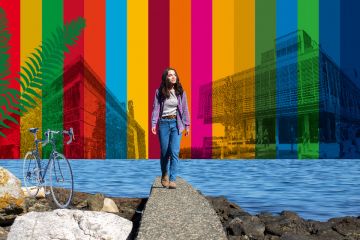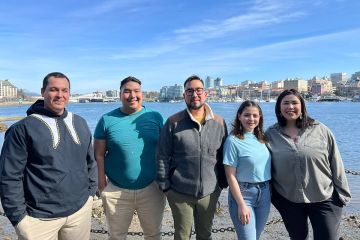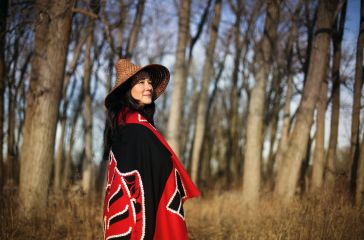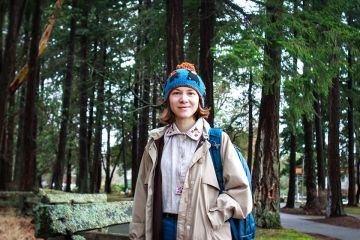Raising awareness with class and art
- John Threlfall
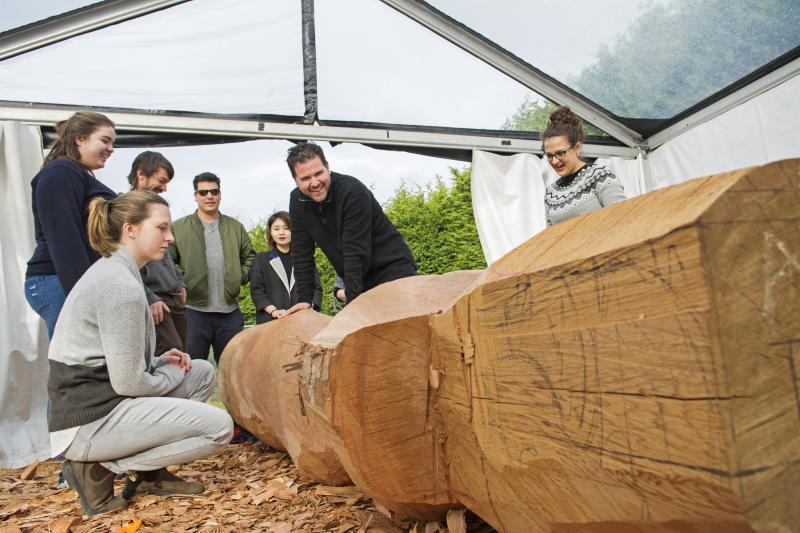
One of the best things about an annual guest teaching position is the diversity it offers students. Now in its sixth year in the visual arts department, the Audain Professorship of Contemporary Art Practice of the Pacific Northwest has benefited from a variety of approaches and practices by previous professors—including the likes of Governor General’s Award-winner Rebecca Belmore. But Rande Cook has one unique aspect not shared by his forerunners: he is the first Audain professor to represent a Vancouver Island nation.
Cook, a contemporary multi-disciplinary artist with a studio in Victoria’s Rock Bay district, is also chief of the ’Namgis nation, which spans northern Vancouver Island and Queen Charlotte Strait. “The chief’s role is to make sure his people are fed in all ways—metaphorically and otherwise—and I take that into my everyday practice, my life as an artist,” he explains. “How I interact with the community is the same as what I do at home. Even teaching this course involves all of my belief systems, making sure people feel whole.”
Cook wanted to do more than just teach art, however; he was also keen to raise student awareness about current issues in Canadian First Nations politics. “I wanted to design a course around the work I’m doing right now, which means looking at the Truth and Reconciliation Commission, the murdered and missing Indigenous women, Idle No More, the REDress project, the round dance movement . . . about healing and bridging,” he says.
No easy task, given that his third- and fourth-year students came from a variety of backgrounds—none of which included a First Nation. “I pushed them to think about the relationship we play within all of this—not just as First Nations but Canadians as a whole—and then to consider how we express that through art,” he says.
Cook also brought Indigenous teaching methods into the classroom by eschewing contemporary critiquing practices in favour of a more intimate, circle-based sharing environment. “The goal of the class is to decide how they’re going to function as artists and how to make their work authentic,” he explains. “And you can see how much they’ve grown, how much they interact, and how they’re going to place themselves in life after this—which is all I wanted.”
While teaching at UVic, Cook is also busy in the visual arts sculpture yard carving a pole dedicated to the murdered and missing Indigenous women. “It’s a nationwide issue, even though a lot of people don’t see it as such,” he says. “There are a lot of unresolved murders from our area, but nobody really talks about them—people tend to focus more geographically on Vancouver’s Downtown Eastside or the Highway of Tears.”
As both chief and artist, Cook feels art can play an important role in the healing process. “There’s no closure when it comes to murder—especially when the victims are never found—so I wanted to create something that stands as a monument to honour these women,” he explains. “It’s easy to talk about healing, about unity, but it’s difficult to practice that when there’s no sense of closure. So if I can put all of those different thoughts and ideas into this symbolic piece of art, it can be a way to recognize that they’re not forgotten.”
And while the future of the pole is still being determined, Cook feels the campus would be an ideal home for the piece once it’s complete. “UVic is a place of knowledge, of learning, so why not use a monument like this for people coming from all these different areas to understand what that means? You think about healing and unity, and students and learning, and diversity and gender equality—it’s all right here.”
——
April 13 update: This story originally indicated that Cook's students' work would be on view as part of the CUVIC conference.
Photos
In this story
Keywords: arts, community, teaching, Indigenous
People: Rande Cook


